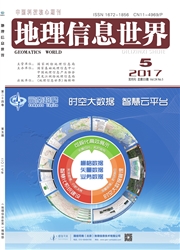

 中文摘要:
中文摘要:
随着经济体制的转变,经济的转型已成为促进发展中国家城市发展的重要因素。为了解城乡地域结构的转变特点和影响因素,本研究多角度量化了宁波市城乡结构的发展与经济转型的关系。提出量化城乡地域结构的指标体系:土地利用面积与景观格局的变化,并提出衡量经济转轨的角度:全球化、去行政化以及市场化。结果表明:城市地区受市场化和行政分权政策影响,整体景观格局趋于破碎化、不规则化。乡村地区由于财政分权,整体格局呈现破碎化和单一化。城市建筑用地扩张受市场化和全球化影响,农田的减少与市场化政策有关。本研究得到了不同城市规划区域对经济转型的响应形式,为政策制定提供建议。
 英文摘要:
英文摘要:
Economic transition has promoted profound urban development in developing countries and a number of megacities have emerged during the last decades.This paper proposed an analytical framework and applied it to the case of Ningbo(China)for quantifying urban structure development in response to economic transition from a multidimensional perspective.In particular,urban structure was quantified from two aspects(sprawl and fragmentation)and economic transition was described from three aspects(globalization,decentralization and marketization).The result shows that in urban planning zone,marketization and decentralization are the primary drivers of land use fragmentation and irregularity.More specifically,built-up area expansion is driven by these two factors,while marketization policy is the main driver of the farmland loss.For the non-urban planning zone,decentralization policy has strong effect on land use fragmentation and simplification.Quantifying urban structure under economic transition can provide critical insights and suggestions for urban policy makers and planners.
 同期刊论文项目
同期刊论文项目
 同项目期刊论文
同项目期刊论文
 期刊信息
期刊信息
